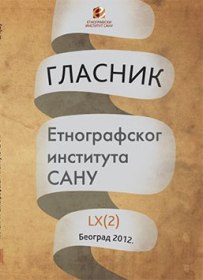Програмирање нематеријалног наслеђа града. Парадигме и перцепције
Programming the Intangible Cultural Heritage of the City. Paradigms and Perception
Author(s): Zorica Divac, Miroslava Lukić-KrstanovićSubject(s): Anthropology
Published by: Етнографски институт САНУ
Keywords: intangible cultural heritage; convention; programming; city; Belgrade
Summary/Abstract: Institutionalization of intangible cultural heritage represents a strong bureaucratic base, strategic policy of monitoring and the creation of order in the production and consumption of culture. In this sense, an intangible cultural heritage, out of its historical projections, projects itself into the complex administrative, political and market control and presentation. UNESCO Convention on Intangible Cultural Heritage was adopted in 2003 while the convention was ratified by Serbia in 2010. It is a complex, hierarchical and branched task of filing, registration, nomination and representation of heritage at the national level of the participating countries, with aims of cultural networking, promotion and preservation of cultural diversity. On one hand, the strategy of conservation and protection of intangible cultural heritage is governed by the standards and paradigms based on elements of traditional culture and folklore, and on the other hand, there is a growing trend of monitoring urban environment heritage, within the process of metropolization. Mapping of intangible cultural heritage includes strategies and indicates possibilities for the development of the city of Belgrade. In Belgrade, heritage is divided into three groups, based on the historical,territorial and social parameters: 1. cultural heritage, encompassing elements reflecting the "ancient", historically verifiable spaces (centers), related to types of practices and events; 2. urban forms of inheritance, based on modern heritage of the city especially in the twentieth century (foremost referring to the elite and popular cultures); and 3. the products of industrial and technological development. Programming intangible cultural heritage assumes the mentioned elements as marked paradigms, and also various perceptions created by individuals and groups within their identifiable enclaves and communication.
Journal: Гласник Етнографског института САНУ
- Issue Year: LX/2012
- Issue No: 2
- Page Range: 9-23
- Page Count: 15
- Language: Serbian

